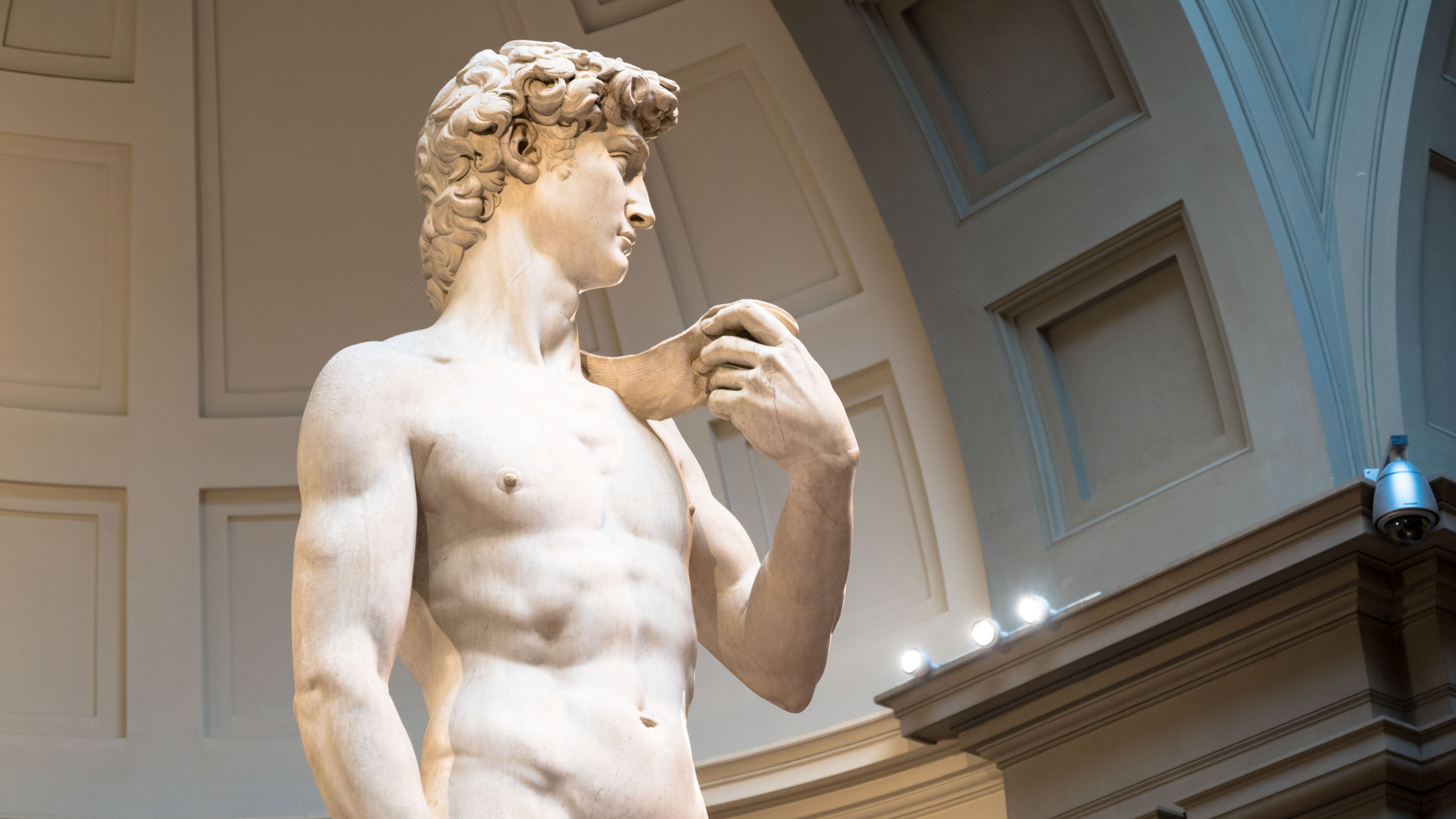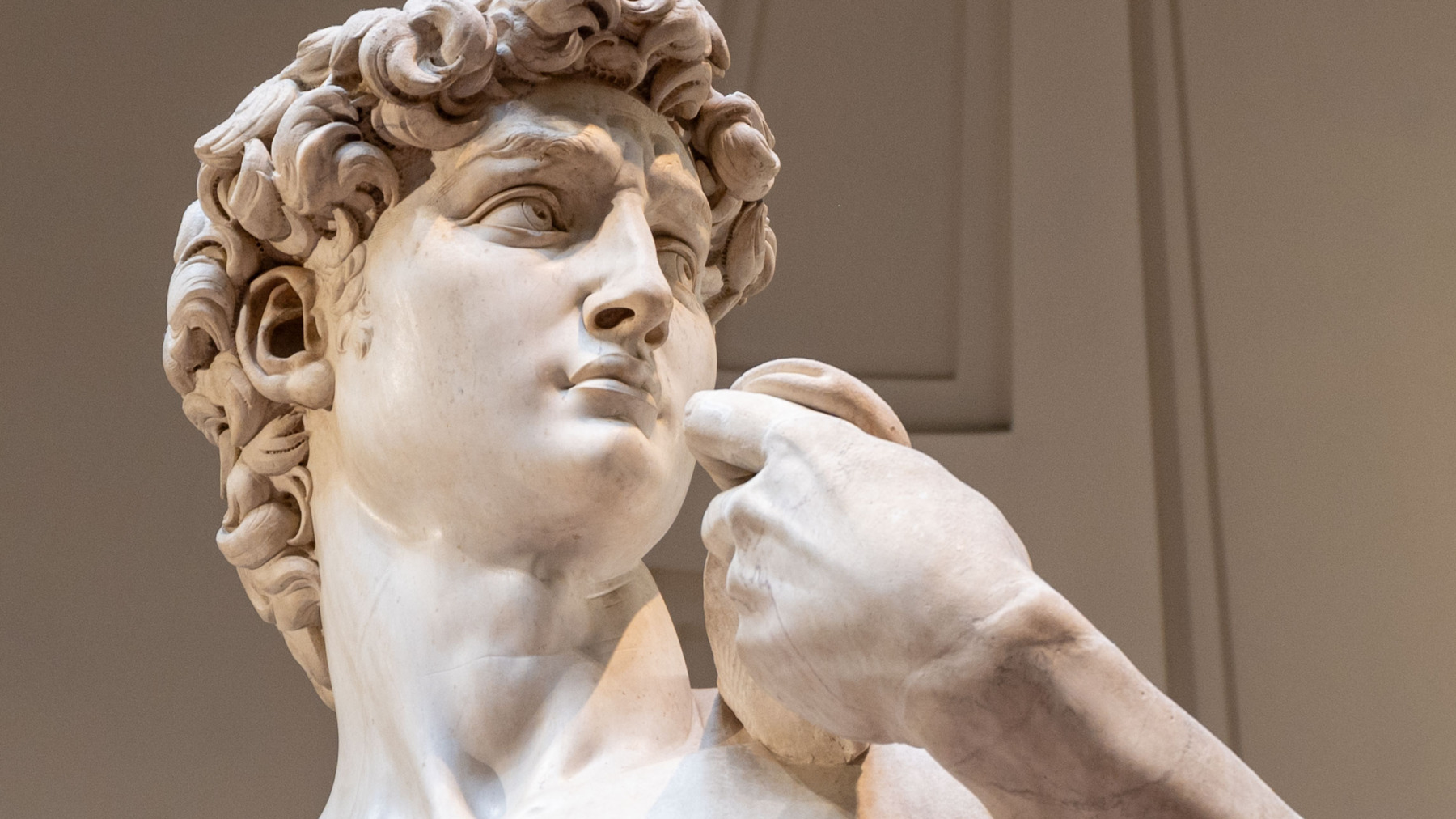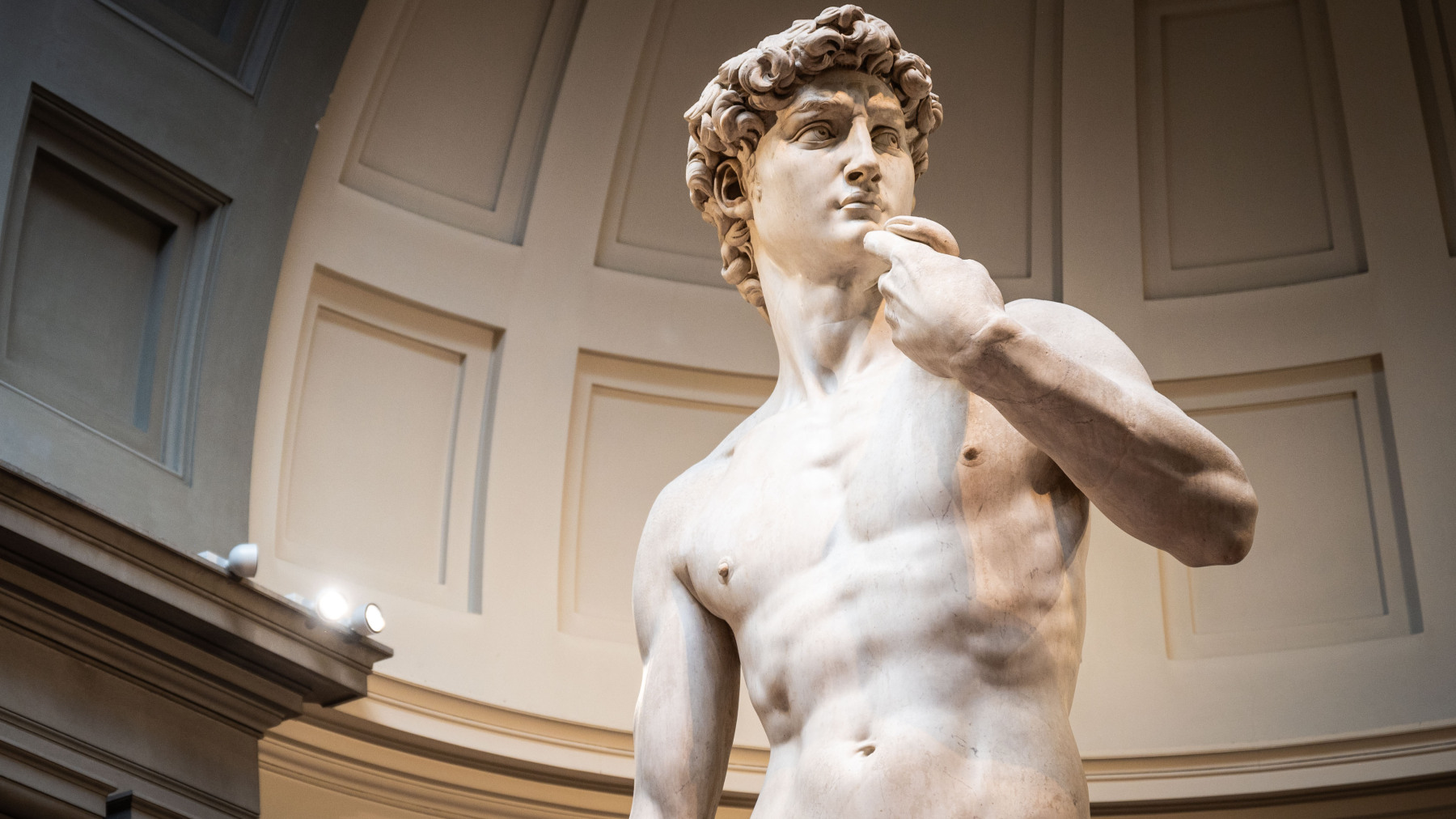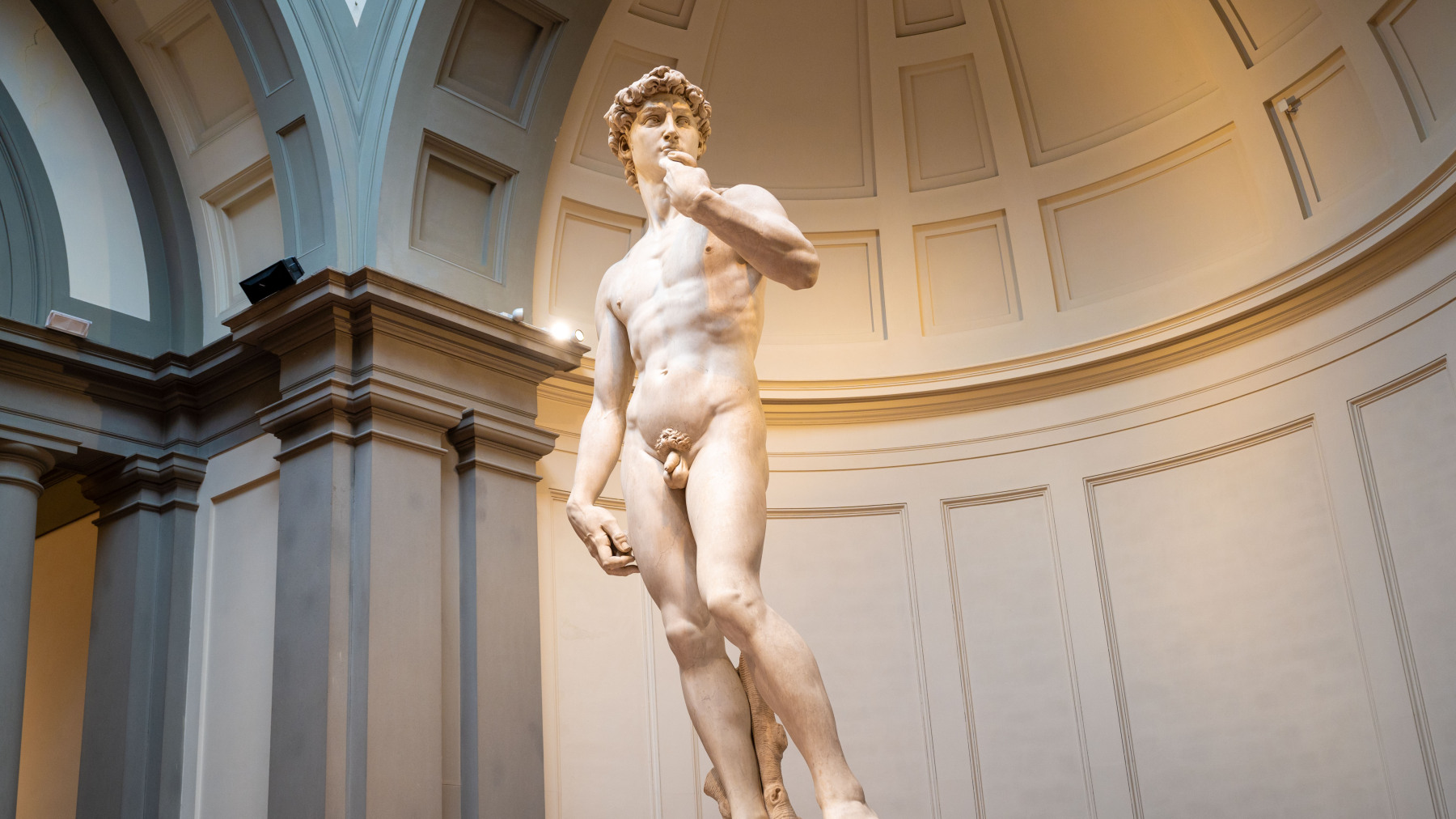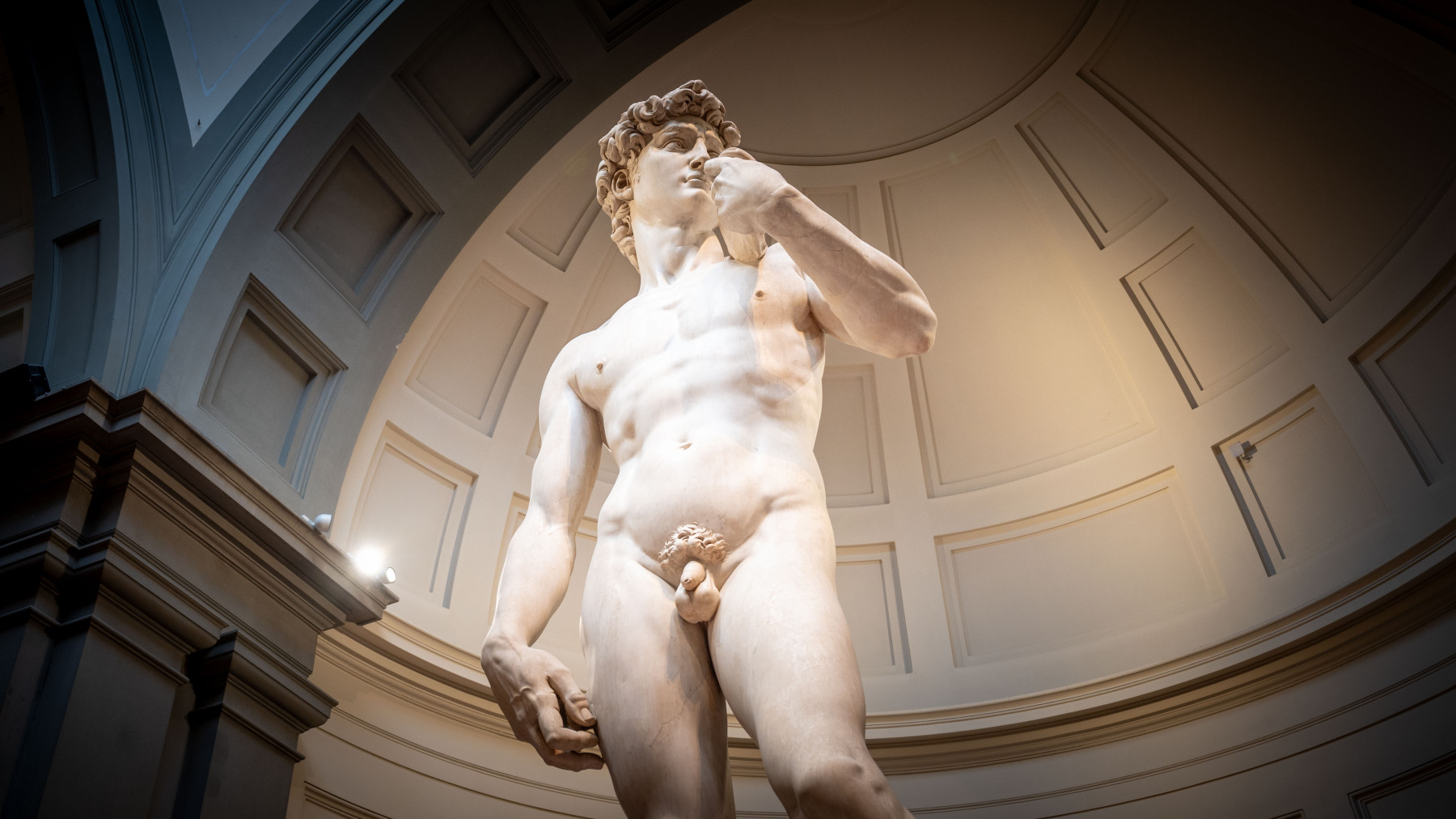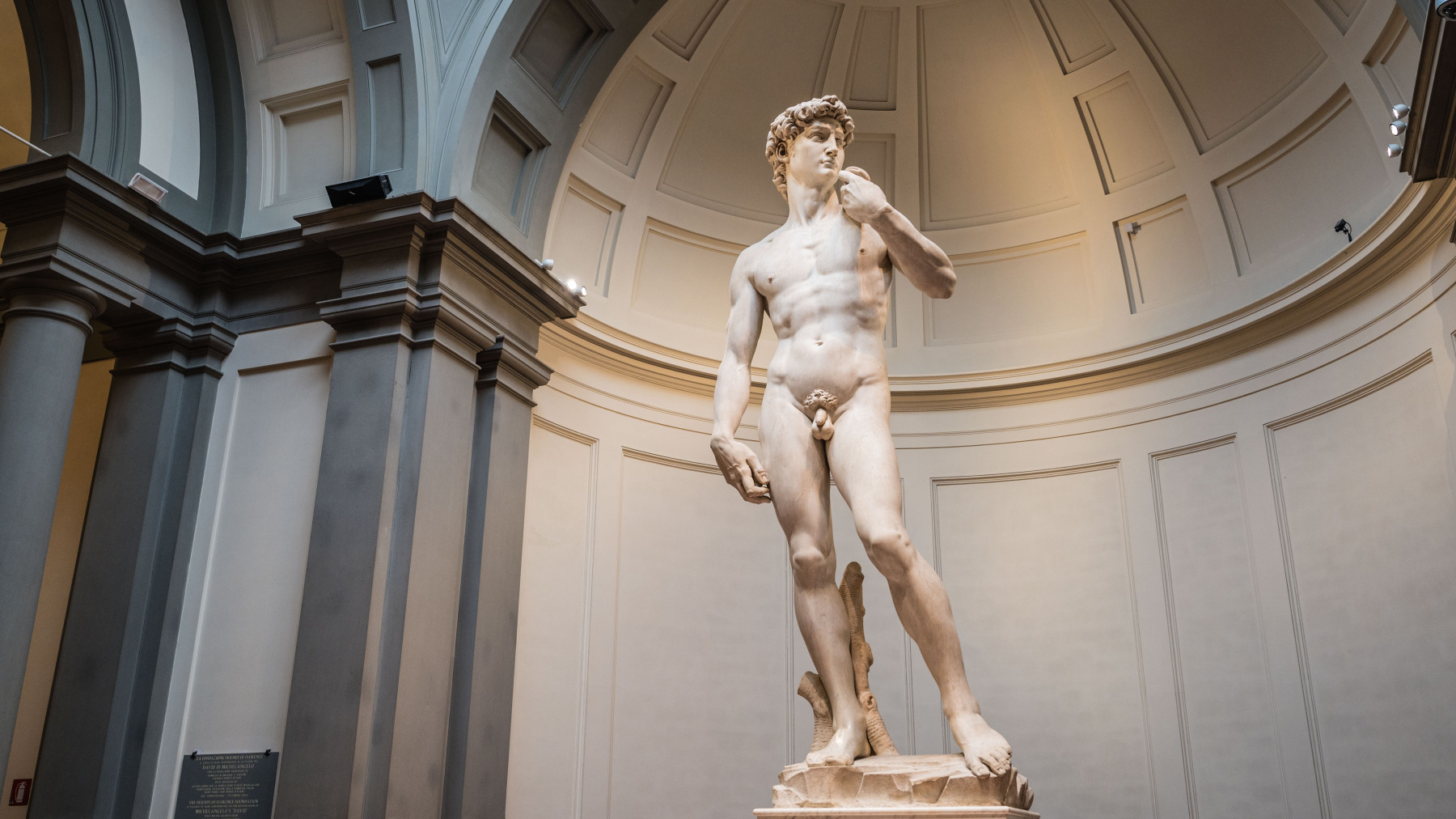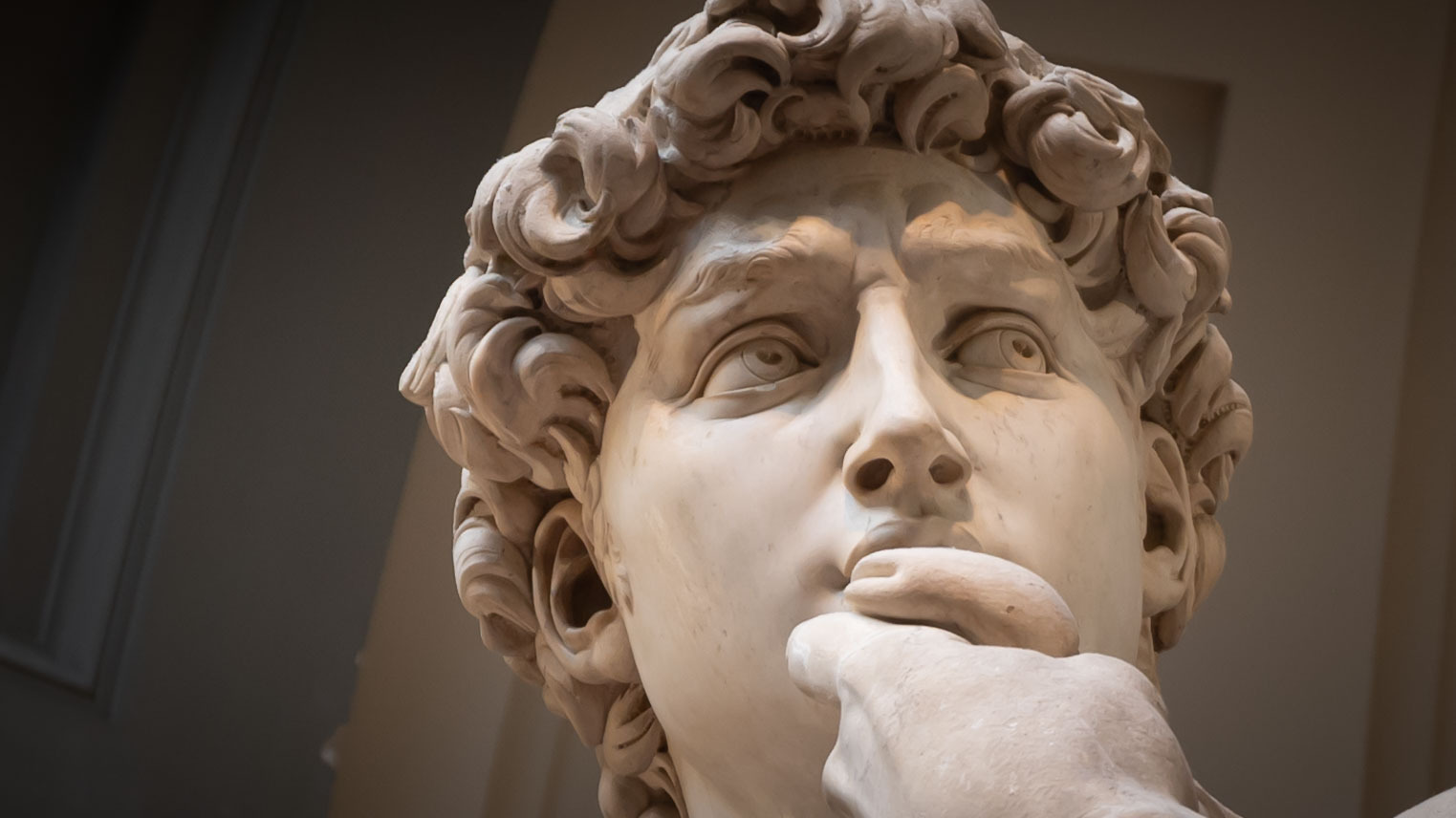Skip to content

The Statue of David
Michelangelo’s Triumph of Renaissance Art
Standing over 17 feet tall, carved from a single block of marble, Michelangelo’s David is more than just a statue—it’s a symbol of human potential, courage, and the brilliance of the Renaissance.
Created between 1501 and 1504, Michelangelo sculpted David when he was only in his twenties. He took on a block of marble that had been previously discarded by other artists, transforming it into one of the most iconic sculptures in history. The statue depicts the biblical hero David, moments before his battle with Goliath—not triumphant and victorious, but calm, focused, and full of quiet tension.
What makes Michelangelo’s David so revolutionary is its psychological depth. Unlike earlier depictions of David as a youthful boy or post-battle victor, Michelangelo chose to show him before the fight—alert, contemplative, and poised for action. This not only showcased Michelangelo’s masterful understanding of human anatomy but also his gift for capturing the inner life of his subjects.
Originally intended for Florence Cathedral, David was instead placed in the Piazza della Signoria as a symbol of the Republic’s defiance against tyranny. Today, the statue resides in the Galleria dell’Accademia in Florence, still drawing millions of visitors from around the world.
Michelangelo once said that he saw the statue already inside the marble and simply chipped away the excess. In David, he didn’t just reveal a man—he revealed the Renaissance ideal: the power of human will and beauty carved in stone.
Outside Michelangelo’s La Pietà and the Louvre’s Winged Victory of Samothrace, the David is one of my favorite sculptures.

